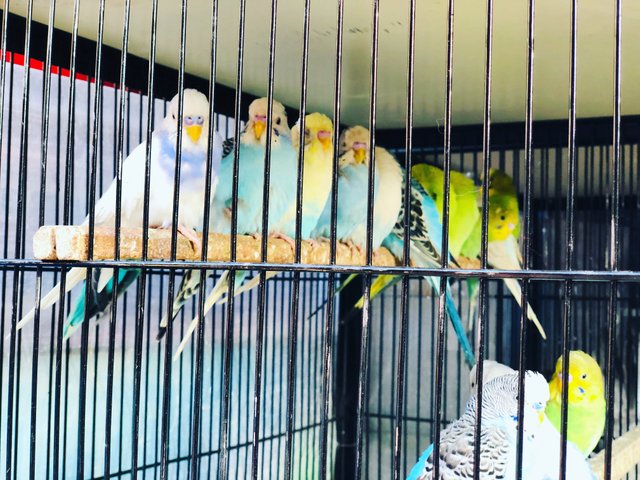Beauty of Birds


Birds (Aves) are a group of vertebrates which evolved from dinosaurs. Technically speaking, they are dinosaurs.
Birds are endothermic, with feathers. Modern birds are toothless: they have beaked jaws. They lay hard-shelled eggs. They have a high metabolic rate, a four-chambered heart and a strong yet lightweight skeleton.
Birds live all over the world. They range in size from the 5 cm (2 in) bee hummingbird to the 2.70 m (9 ft) ostrich. They are the class of tetrapods with the most living species: about ten thousand. More than half of these are passerines, sometimes known as perching birds.
Birds are the closest living relatives of the Crocodilia. This comes about because they are the two main survivors of a once huge group called the Archosaurs.
Modern birds are not descended from Archaeopteryx. According to DNA evidence, modern birds (Neornithes) evolved in the Middle to Upper Cretaceous.More recent estimates, using a new way of calibrating molecular clocks, showed that modern birds originated early in the Upper Cretaceous. However, diversification occurred around the Cretaceous–Palaeogene extinction event.
The Cretaceous–Palaeogene extinction event 66 million years ago killed off all the non-avian dinosaur lines. Birds, especially those in the southern continents, survived this event and then migrated to other parts of the world.
Primitive bird-like dinosaurs are in the broader group Avialae.They have been found back to the mid-Jurassic period, around 170 million years ago.[1] Many of these early "stem-birds", such as Anchiornis, were not yet capable of fully powered flight. Many had primitive characteristics like teeth in their jaws and long bony tails.
Birds have wings which are more or less developed depending on the species. The only known groups without wings are the extinct moa and elephant birds. Wings, which evolved from forelimbs, gave birds the ability to fly. Later many groups evolved with reduced wings, such as ratites, penguins and many island species of birds. The digestive and respiratory systems of birds are also adapted for flight. Some bird species in aquatic environments, particularly seabirds and some waterbirds, have evolved as good swimmers.
Some birds, especially crows and parrots, are among the most intelligent animals. Several bird species make and use tools. Many social species pass on knowledge across generations, a form of culture. Many species annually migrate great distances. Birds are social. They communicate with visual signals, calls and bird songs. They have social behaviours such as cooperative breeding and hunting, flocking and mobbing of predators.
Most bird species are socially monogamous, usually for one breeding season at a time, sometimes for years, but rarely for life. Other species are polygynous (one male with many females) or, rarely, polyandrous (one female with many males). Birds produce offspring by laying eggs which are fertilised by sexual reproduction. They are often laid in a nest and incubated by the parents. Most birds have an extended period of parental care after hatching. Some birds, such as hens, lay eggs even when not fertilised, though unfertilised eggs do not produce offspring.
Many species of birds are eaten by humans. Domesticated and undomesticated birds (poultry and game) are sources of eggs, meat, and feathers. Songbirds, parrots and other species are popular as pets. Guano is harvested for use as a fertiliser. Birds figure throughout human culture. About 120–130 species have become extinct due to human activity since the 17th century and hundreds more before then. Human activity threatens about 1,200 bird species with extinction, though efforts are underway to protect them. Recreational bird-watching is an important part of the ecotourism industry.